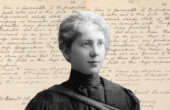Why It’s So Difficult to Accomplish Inclusion: Homophily and Diversity

In 2002, the then dean of engineering at MIT, Thomas Magnanti, wrote in the foreword to the school’s report on the status of women that part of his attraction to engineering as a child had been its promise that anyone with merit could succeed. He was disappointed to discover that, at MIT, that was not so:
We learn, for example, about some of our women faculty colleagues, who despite their superb professional standing and despite the fact that they are highly valued by their faculty colleagues, have never been asked to serve on the Ph.D. committee of even one of their colleagues’ students in their own research area. Stunning.
This no longer comes as a surprise to many of us who work in academia. Yet one claim we continue to hear is that there really isn’t a problem, anymore. There used to be a problem, but those times are behind us.

To be sure, the problem used to be bigger and more overt, but it’s still there, noticeable in the slower advancement of women and people of color compared to men and Whites, and in the more marginal position women and people of color occupy in their professional communities.
One example concerns the identity of invited speakers at conferences. In 2016, the University of Windsor had a conference directed toward undergraduates, who could present their work to the university community. There were six keynote speakers — all men. Four were faculty — four White men. One speaker was a First Nations man who coordinates the Aboriginal Education Centre at the university. One speaker was a Black man who was the president of the university’s Students Alliance. We choose this example — among several we could have described — because the conference was aimed at undergraduates and had encouraged undergraduates to make presentations.
We know that people’s aspirations are affected by whom they see in different positions — so the failure to include a single woman in a group of six speakers sends an unwelcoming message to young women. And that unwelcoming message is repeated at academic conferences the world over.
Luckily, there are now plenty of resources available for organizers. The nonprofit group 500 Women Scientists, for instance, provides a directory of women scientists around the world for anyone “who needs to consult a scientist for a news story, invite a keynote speaker or panelist for a conference or workshop, find a woman scientist to collaborate on a project, or serve as a subject matter expert in any capacity,” while biaswatchneuro includes a formula for how to determine whether the number of women and men on a panel is what you would expect by chance, given the representation of women in the field. A good starting point might be Jacqueline O’Neill’s timeless article at Foreign Policy, which swiftly outlines seven rules for avoiding all-male panels, or ‘manels.’
In academia, homophily can enter the picture at every point in the assessment of merit, from hiring to promotion to tenure.
The underrepresentation of women in positions of power and prestige is a complex phenomenon that no single factor can explain. But one contributing factor may be homophily, or a preference for people we perceive to be similar to us. In academia, homophily can enter the picture at every point in the assessment of merit, from hiring to promotion to tenure. When members of a search committee say that a candidate is not “a good fit,” they may be expressing a homophilous preference. And when symposium organizers plan whom to invite to participate, homophily can limit the range of people they think of.
One example of homophily at a large research-intensive university comes from a survey of male and female scientists taken in 2014. The men’s and women’s networks of colleagues were similar in size, and they reported equal resources and opportunities for collaboration. However, the networks differed in composition. Both groups had more men than women in their networks, presumably reflecting the fact that the natural sciences are male dominated. But men’s networks had a higher proportion of men than women’s networks did, and women’s networks had a considerably higher proportion of women than men’s networks did. The fact that women report having more women in their network than men do shows that it is possible for men to include more women.
Although we know of no studies that examine homophily with respect to race or ethnicity in academia, we would expect the same phenomenon there. Again, the message is clear: If we examine the content of our networks, we are likely to observe a small homophilous preference that operates to limit their diversity, not the small preference for diversity that might lead to different outcomes.
Homophily plus Aversive Racism
As with many preferences, homophily tends to operate outside awareness. White scholars’ own racism is so painful and socially costly to acknowledge (i.e., aversive) that they will create rationales to justify their preferences that have nothing to do with race or ethnicity, even when the data suggest that ethnicity is indeed the basis for their behavior. For example, White individuals are more likely to show a preference for Whites if they have previously been in a position where they made a token gesture that indicated support for a Black person.
In 2008, researchers found that individuals who said that they supported Barack Obama were more likely to then say that Whites were more suitable for a job than Blacks. It appears that simply announcing that one is progressive gives one more license to be less progressive than if one had not made such an announcement. Self-congratulation on one’s good intentions and past “progressive” actions makes one freer to act at variance with those espoused beliefs.
Further, though it is counterintuitive, people’s egalitarian goals, and their beliefs that they are egalitarian, can lead to their making nonegalitarian choices, again without realizing that they are doing so. Psychologists Nikki Mann and Kerry Kawakami found, for example, that when participants — primarily White and Asian — are given false feedback telling them that they are progressing in becoming more positive toward Blacks, they then sit further away from Black individuals and closer to White individuals than do participants who do not receive such feedback. Our knowledge of our high ideals has two effects: It fools us into thinking we live up to our ideals, and it frees us to live up to them less.
Our knowledge of our high ideals has two effects: It fools us into thinking we live up to our ideals, and it frees us to live up to them less.
When Whites are given more rationales for not helping someone, they are less likely to help Blacks than they are to help Whites. If, for example, helping someone would take time or involve risk, Whites can justify not helping on those grounds. But they are more likely to invoke such grounds to avoid helping Blacks than to avoid helping Whites. And as psychologist Phillip Goff and colleagues found, ironically, Whites sometimes distance themselves from Blacks because they are afraid of appearing racist in an interaction. If, however, Whites see an interaction with Blacks as an opportunity to learn, rather than as a test they might fail, they are somewhat more likely to engage in interaction.
It is difficult for people to be aware of all the ways in which their behavior reflects their nonconscious beliefs and attitudes. One study with White undergraduate participants in conversation with White or Black confederates found that their explicit (expressed and conscious) attitudes predicted their verbal behavior, but their implicit attitudes (those outside of their awareness but reflected in preferences and comfort level) predicted their nonverbal behavior.
Explicit attitudes were measured by a set of questions the participants answered; implicit attitudes were measured by how quickly they assigned value-laden adjectives (like smart, likable, and good; or stupid, unpleasant, and bad) to White or Black faces. Independent observers who did not know whether the student had interacted with a White or Black confederate assessed behaviors such as how friendly a participant was. The participants themselves could predict their verbal behavior, but not their nonverbal behavior. This is one of several experiments suggesting that aspects of behavior that are outside conscious awareness reflect beliefs and attitudes we may not only be unaware of, but dislike.
What we have learned so far suggests that our intentions, and genuine egalitarian principles, are not enough to guide our behavior. The combination of small preferences for people like us — homophily — and trust in our good intentions yields behavior that isolates or marginalizes people who are not like us and impedes our capacity to create institutions that are diverse and inclusive. The good news, though, is that we will create more diverse environments and teams — and benefit from that diversity — if we make a constant small effort in the direction of diversity and inclusion.
Abigail Stewart is Sandra Schwartz Tangri Distinguished University Professor of Psychology and Women’s Studies at the University of Michigan.
Virginia Valian is Distinguished Professor of Psychology, Linguistics, and Speech-Language-Hearing Sciences at Hunter College and the CUNY Graduate Center. She is the Director of Hunter’s Gender Equity Project, and the author of “Why So Slow: The Advancement of Women” and coauthor (with Abigail Stewart) of “An Inclusive Academy: Achieving Diversity and Excellence,” from which this article is adapted.



